 Did she or didn’t she?  
These two photos showing burlesque dancer Lili St. Cyr were shot today in 1951 for a Los Angeles Examiner story about St. Cyr’s legal difficulties. On 23 February of that year she had begun performing at Ciro’s supper club in Hollywood. It was a different type of club for her—it lacked the intimacy of her normal venues, and would sap some of the heat from her act, but the place was world famous and considered by the smart set to be classy. It had hosted Edith Piaf, Marlene Dietrich, Duke Ellington, and Dinah Washington. Of late it was facing stiff competition from Macambo’s, a Brazilian themed joint across the street, and owner Herman Hover wanted to make a splash with St. Cyr. He spent thousands refurbishing the stage just for her, and she would be the first burlesque dancer to transition from men’s clubs to L.A.’s most famous supper club. On premiere night celebs such as Ronald Reagan, Nancy Davis, Franchot Tone, Barbara Payton, Lex Barker, Mickey Rooney, and Los Angeles mayor Fletcher Bowron watched her strip down to toned perfection as they ate dinner and sipped drinks. Other celebs that visited that summer included Bette Davis, Humphrey Bogart, and Clark Gable. During St. Cyr’s residency she varied her act, but a standard bit was 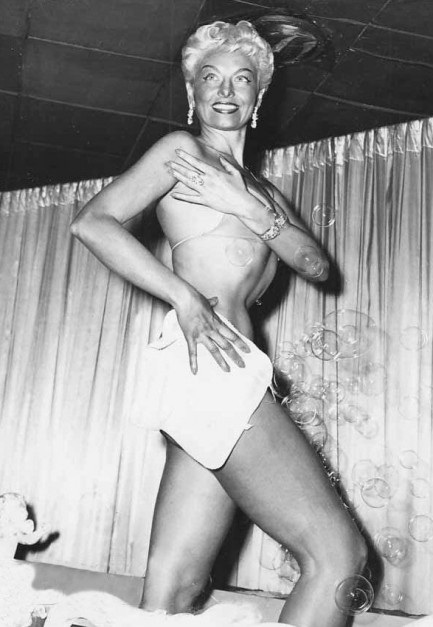 entitled "An Interlude Before Evening," and involved being helped from her clothing by her maid Sadie before slipping nude into a bathtub. But the nudity was an illusion, the cleverest part of her act, achieved through a combination of lighting, positioning, flesh-colored underwear, and sheer athleticism as she slipped quickly from behind a towel and into the sudsy tub. entitled "An Interlude Before Evening," and involved being helped from her clothing by her maid Sadie before slipping nude into a bathtub. But the nudity was an illusion, the cleverest part of her act, achieved through a combination of lighting, positioning, flesh-colored underwear, and sheer athleticism as she slipped quickly from behind a towel and into the sudsy tub. On 18 October a group of Los Angeles sheriff’s deputies, who were trying to enforce a countywide ban against stripping, arrested St. Cyr and Herman Hover. The charges were the usual slate. St. Cyr called upon celebrity lawyer Jerry Giesler—an event the two Examiner photos at top are supposed to be illustrating—and Giesler proceeded to help turn what was already a media boon for St. Cyr into a full bonanza. Giesler was a showman, and he loved cases that had the potential to increase his fame. He made assorted sensational statements to the press, including one in which he promised to have his client perform her bath routine in the courtroom, and another in which he opined that putting together a jury of peers required empaneling a dozen strippers. He described St. Cyr as merely trying to improve her station in life, just an industrious woman trying to carve herself a piece of American pie. The press ate it up. 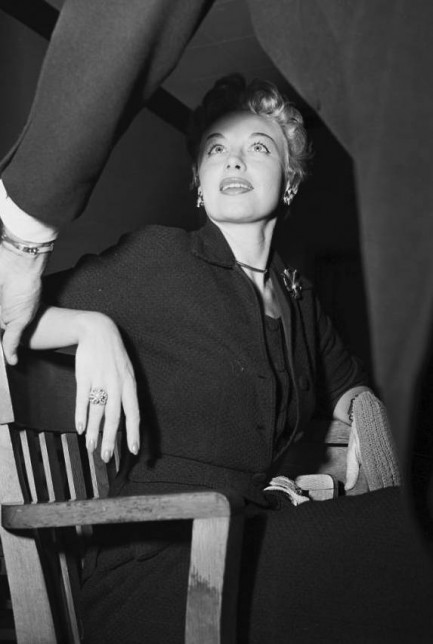 The trial was scheduled for early December in the Beverly Hills Courthouse. Giesler kept the jury—which wasn’t all strippers, but at least was mostly female—laughing with his continual antics. He introduced St. Cyr’s rhinestone encrusted bra and g-string as people’s exhibits A and B. He drew diagrams on a blackboard illustrating how different observers' vantage points toward the stage were blocked by St. Cyr's maid. He flustered police officials by making them discuss in detail such such terms as “bump,” “grind,” and “half-bump,” and followed that up by putting Herman Hover on the witness stand and having him demonstrate those moves. The sight of the portly Hover attempting burlesque sent ripples of laughter through the courtroom. Years later Giesler wrote: “I can honestly say I succeeded in having her case laughed into a not-guilty verdict.” The trial was scheduled for early December in the Beverly Hills Courthouse. Giesler kept the jury—which wasn’t all strippers, but at least was mostly female—laughing with his continual antics. He introduced St. Cyr’s rhinestone encrusted bra and g-string as people’s exhibits A and B. He drew diagrams on a blackboard illustrating how different observers' vantage points toward the stage were blocked by St. Cyr's maid. He flustered police officials by making them discuss in detail such such terms as “bump,” “grind,” and “half-bump,” and followed that up by putting Herman Hover on the witness stand and having him demonstrate those moves. The sight of the portly Hover attempting burlesque sent ripples of laughter through the courtroom. Years later Giesler wrote: “I can honestly say I succeeded in having her case laughed into a not-guilty verdict.” That may have been true, but St Cyr’s icy demeanor was also an important factor. The women found her elegant and remote—the opposite of what they had expected. And the cops did their part for St. Cyr's defense by being terrible witnesses. One claimed that she emerged from the tub completely nude (the normal conclusion to her Interlude, and just as illusory). Another said she wore undies but that he could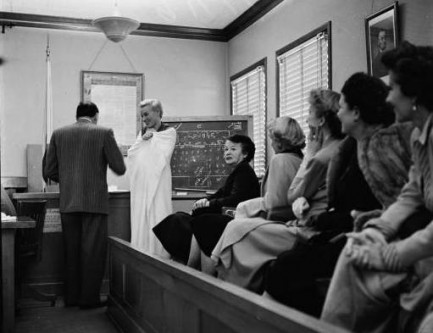 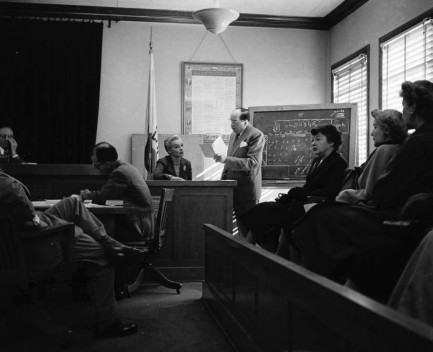 see the outline of her “private parts,” which he discerned in enough detail to determine “were shaven.” The inconsistencies were epic. Some said she caressed herself, others weren’t sure. Another described her towel as “about twenty, twenty-four inches.” In reality it was three times that size. It was as if St. Cyr's dance had dumbfounded the cops. see the outline of her “private parts,” which he discerned in enough detail to determine “were shaven.” The inconsistencies were epic. Some said she caressed herself, others weren’t sure. Another described her towel as “about twenty, twenty-four inches.” In reality it was three times that size. It was as if St. Cyr's dance had dumbfounded the cops. The confusion has extended even to the present day. For a performance that lasted barely fifteen minutes, it has had an amazing amount of conflicting information attached to it. Columnist Army Archerd claimed St. Cyr was indeed nude that night (clearly wrong, according to multiple testimonies); Sheila Weller’s book Dancing at Ciro’s claims an “all-male” jury (it was mostly female) was taken to Ciro’s to see the act (Giesler tried, but the judge said no); some sources claim St. Cyr performed a reverse strip, beginning nude in the tub and emerging to be slowly dressed by her maid (indeed, that was an oft-performed variation, so it is certainly possible it happened that night). Who's right, and who's wrong? Short of using a time machine to return to October 1951 there's no way to tell. At the end of the six-day trial the jury acquitted St. Cyr following a mere seventy-eight minutes of deliberations. There had been no indecent exposure. At least not that night. All St. Cyr’s biographers agree on this much—she was shy and regal offstage, but her performances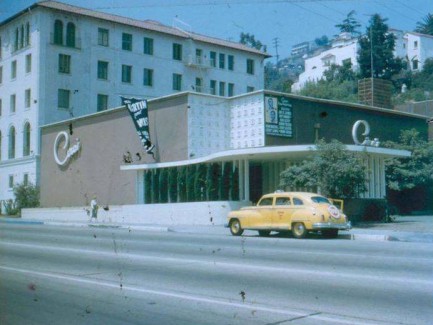 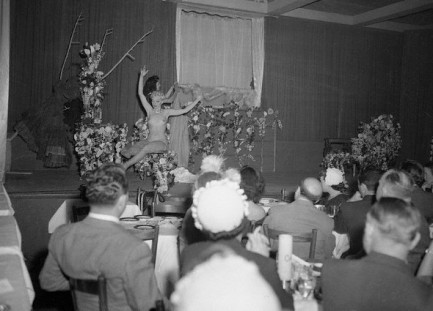 freed her to inhabit different characters. Despite her assertions that she always wore at least a g-string and bra, she definitely performed topless on occasion, as shown by the above photo taken at Ciro’s during early 1951. freed her to inhabit different characters. Despite her assertions that she always wore at least a g-string and bra, she definitely performed topless on occasion, as shown by the above photo taken at Ciro’s during early 1951. Sheriff’s deputies had gone to the club already intent upon arresting her based on what they had heard about the act, which may have influenced their testimony—i.e., they didn’t see her nude, but knew she had done it before. St. Cyr admitted in court she knew police were in the audience, thus she was especially careful that night. But what of other nights? Maybe Army Archerd did what columnists do—took an event he witnessed on one night and pretended it happened on a more useful one. Maybe St. Cyr, on occasions when she knew the cops were far away, flashed her audience to generate buzz. It’s likely we’ll never know what really happened, but that merely adds to the St. Cyr mystique. Did she or didn’t she? Only her maid knew for sure.
 Breakdown dead ahead. 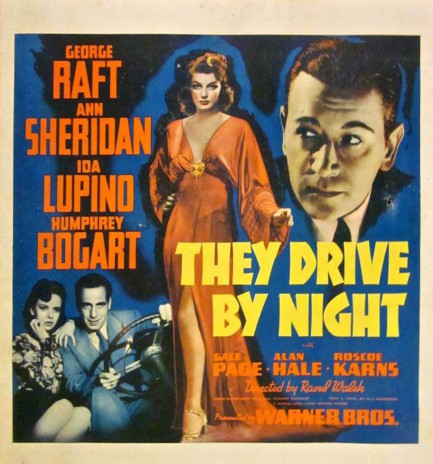
Speaking of driving, here’s another poster for the thriller They Drive by Night. We already talked about it a bit last month and shared a French poster from 1947. The movie is excellent, considering how the last act is written, and Ann Sheridan is especially good. We also like her in the center of this photo-illustrated poster. They Drive by Night had its world premier today in 1940.
 Scenes from the class struggle in film noir. 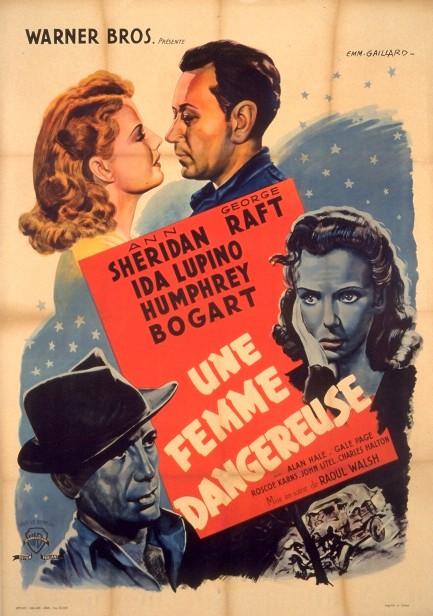
This nice piece was painted by French artist Emmanuel Gaillard for Une femme dangereuse, which was originally released in 1940 as They Drive by Night. The movie, which is adapted from A. I. Bezzerides’ 1938 novel Long Haul, deals with two wildcat truckers caught in the American class struggle—you know, that thing all the millionaire pundits on television tell you doesn’t exist? The drivers want to rise above their station, but find many obstacles in their way, including leasing companies, fruit buyers, competing truckers, road accidents, injuries, fatigue, and eventually, murder. While the world-against-the-working-man aspect is interesting, the best part is watching George Raft and Humphrey Bogart play the two hard luck drivers. The movie also boasts the excellent Ann Sheridan, as well as film noir icon Ida Lupino in full-on crazy mode. But like the several trucks onscreen that veer off the road, the movie itself lurches into melodrama at the end. Une femme dangereuse had its French premiere today in 1947.
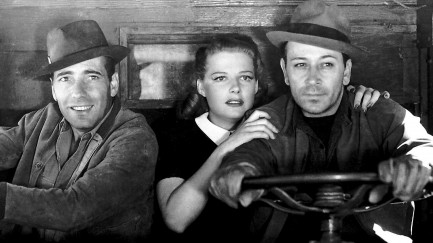 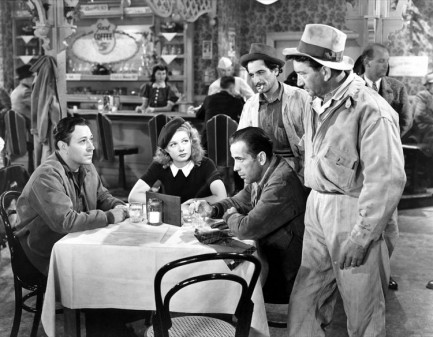
 The National Police Gazette really knew how to beat a dead Hitler. 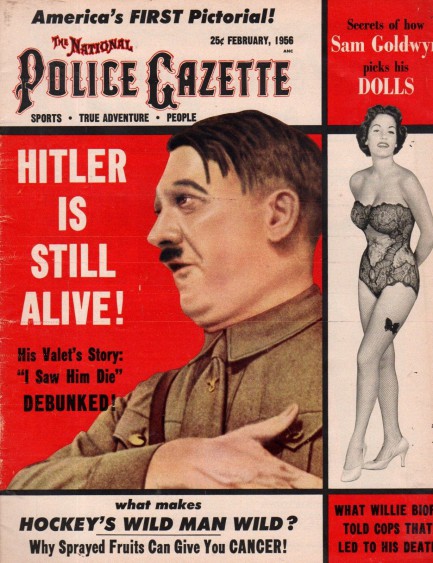
Police Gazette sometimes faced a need for Adolf Hitler to star on their covers that surpassed available supplies of art. The February 1956 cover you see above was the first time that particular image was used, but they dug it out again for their January 1977 issue, which you see below, and which we showed you in larger size here. By now you know the Gazette’s mission post-World War II was to prove Hitler didn’t die in Berlin. In this issue George McGrath—the same writer who usually penned these stories—offers a list of reasons why Hitler was still alive as of 1956. Among them:
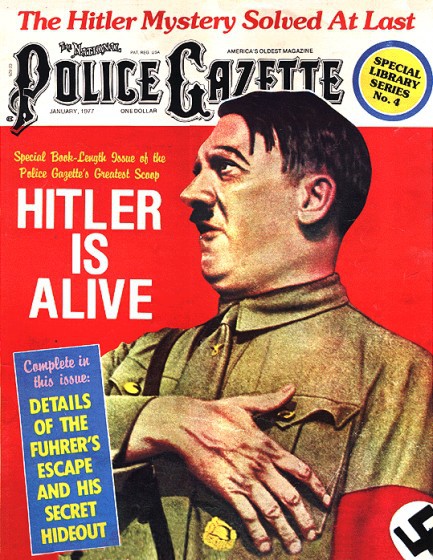 • The only eyewitness to Hitler’s suicide—his valet Heinz Linge—later recanted his testimony and admitted he never saw the Führer shoot himself. • The only eyewitness to Hitler’s suicide—his valet Heinz Linge—later recanted his testimony and admitted he never saw the Führer shoot himself. • Hitler’s body was burned to unrecognizable ashes, but there’s no possibility that setting fire to human biomass with petrol could burn it to ashes. Most of it would remain. • Despite the fact that every inch of the Reich Chancellery was searched and sifted, not a single trace of Hitler’s blood was ever found. And so forth. For a thorough debunking of McGrath’s theories, you can go just about anywhere on the internet. We’ll just point out again that those who believe Americans’ receptivity to alternate theories of historical or current events is a new phenomenon haven’t read enough old tabloids. The Gazette enjoyed a quite decent readership, and during the 1950s it and other tabloids like Confidential—also a haven for occasional crackpot speculations—were among the most circulated magazines in the country. In short—and this seems especially appropriate to point out with American news anchor Brian Williams in hot water for alleged on-air lies, and Fox News being laughed at for echoing an obviously fake story about the King of Jordan flying combat missions against ISIS—sloppy or false reporting in America’s most popular media outlets has always been a problem. The old tabloids fashioned themselves as maverick truthtellers, and that label, along with some flashy visuals, was enough to attract eyeballs. For today's cable news, the same self-labeling and eye candy visuals work the same way. We will have plenty more from the Police Gazette later.
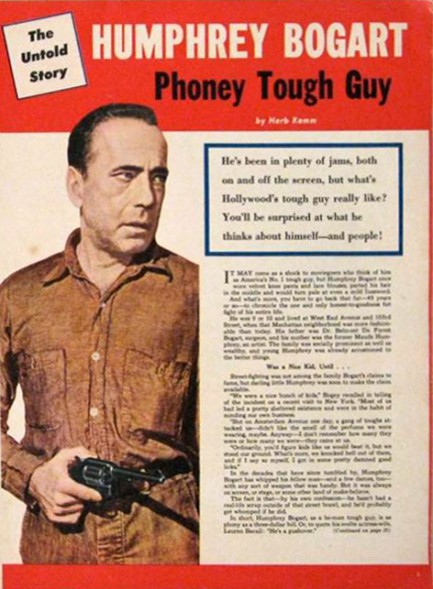
 Raft tries to navigate dangerous waters. 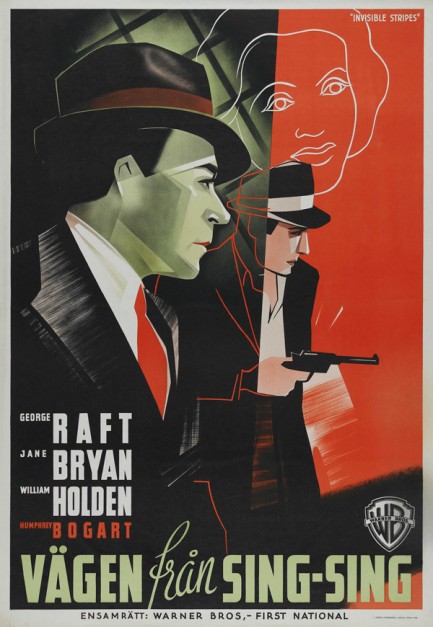
This poster for Vägen från Sing Sing showcases the clean style and bold negative space we’ve become fans of in mid-century Swedish promo art, and it also captures star George Raft’s famous profile. This was originally a 1939 American production called Invisible Stripes starring Raft, Jane Bryan, William Holden, and Humphrey Bogart, and it deals with a Sing-Sing ex-con’s perhaps doomed efforts to go straight. Check out the Swedish aesthetic here, here, here, and here. Vägen från Sing Sing premiered in Sweden today in 1940.
 Way down Argentine way Bogart fronts the era’s definitive detective novel. 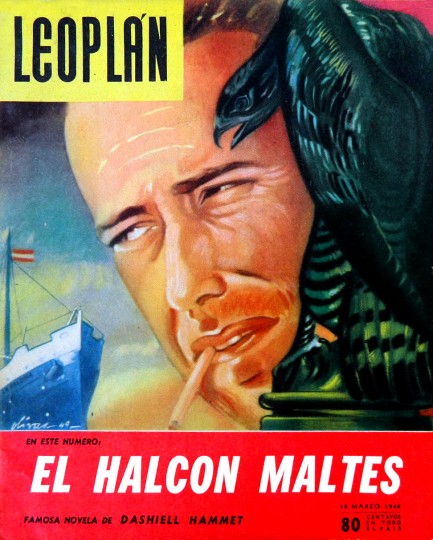
Leoplán was an Argentine magazine published by Ramón Sopena’s eponymous company Editorial Sopena from 1934 to 1965. This issue features a complete Spanish language reprint of Dashiell Hammett’s The Maltese Falcon and is fronted by a nice Manuel Olivas painting of Humphrey Bogart and the bird. It’s from 1949.
 He wasn’t very tall, but he cast a long shadow. 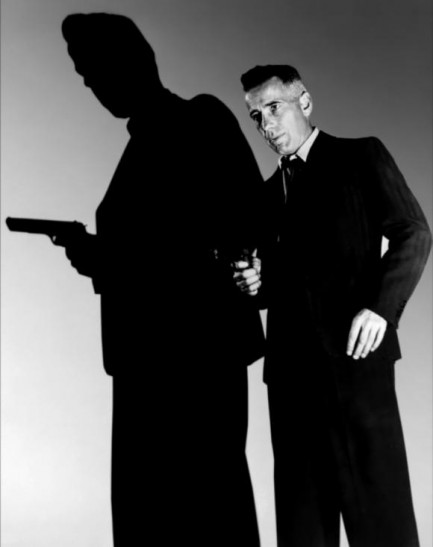
Above, Humphrey Bogart in a promo shot from 1941’s High Sierra, a movie that examines the futility of greed and violence (at least for those with no power or connections). It was more or less the fortieth film Bogart had made, and further cemented his bankability before he truly broke out as a leading man later the same year with The Maltese Falcon. Also, you can once again thank W.R. Burnett—he wrote the novel and collaborated on the screenplay.
 Passage to Marseille has plenty of message but not enough movie. 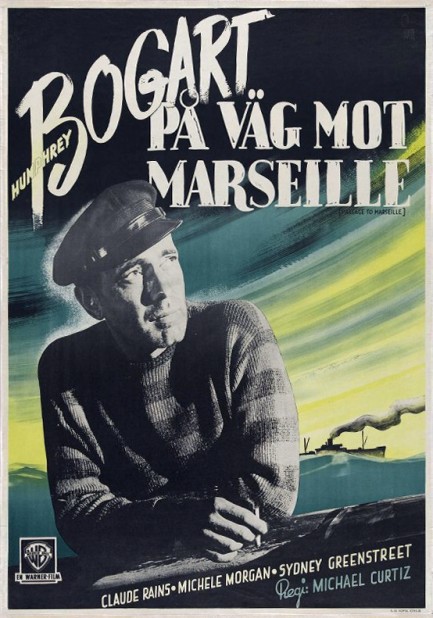
We’ve seen nearly every Humphrey Bogart movie but had been warned away from Passage to Marseille. We finally watched it last night and the haters were right—it’s substantially below standard. You have Casablanca director Michael Curtiz at the helm and Casablanca alumni Bogart, Claude Rains, Peter Lorre, and Sydney Greenstreet in front of the camera, along with the lovely Michèle Morgan in the female lead, but all their combined efforts cannot elevate this clumsily written propaganda piece. Curtiz is not to blame—his direction is functional and James Wong Howe photographs everything beautifully. Likewise, Bogart manages his role adequately, Lorre and his emotive brow are put to ample use, and Rains dons an eyepatch and permafrown to bring some gravity to matters. But Passage to Marseille is just a badly written film. Where Casablanca used patriotic sentiments adroitly (who can forget the way the singing of the French national anthem “La Marseillaise” both roused the audience and advanced the plot?), Passage to Marseille flounders under the weight of cheap nationalism and sticky sentiment. It enjoys a decent rating on many review websites but we daresay that’s mainly due to Bogart bias (wherein even his bad flicks like Chain Lightning and Battle Circus have good ratings). We love the guy too, but no actor in history has batted 1.000, and this movie was a clean whiff. As propaganda it doubtless got the job done, but as a film we suggest consigning it to a dusty, unreachable shelf. Passage to Marseille premiered in Sweden as På väg mot Marseille today in 1944. 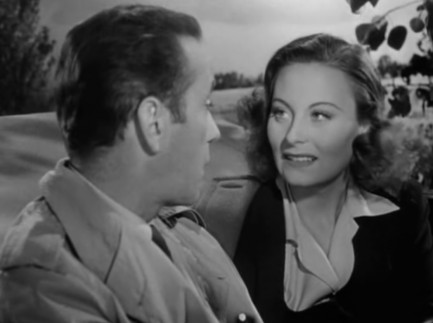 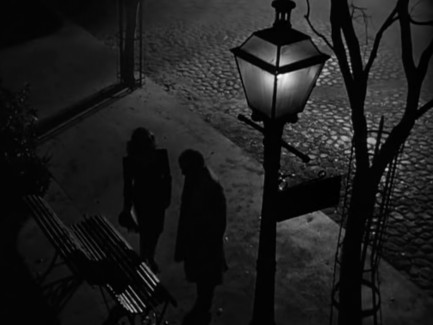 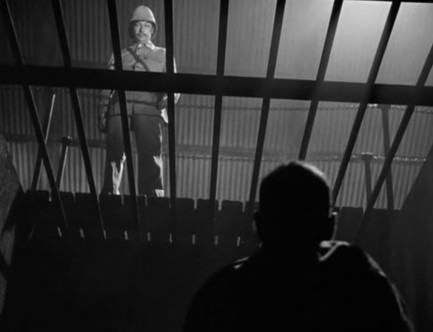 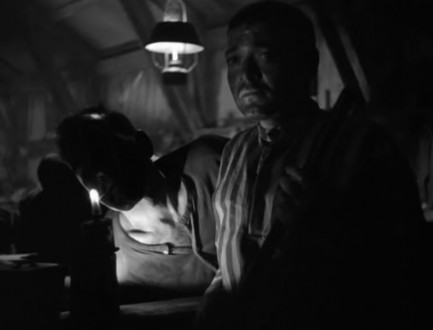 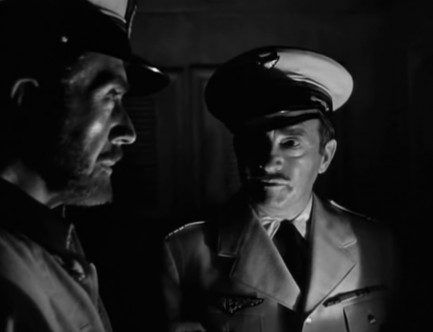
 Need a model for your bookcover? We’ve got a recommendation. 
This cover for Joli brin d’amour has Humphrey Bogart on it. Right? No doubt about it, that’s him. The guy turns up everywhere. Joli brin d’amour, which means something like “pretty bit of love” or maybe “nice bit of love,” (French speakers, help us out with this one) was published in 1960 by Editions de Lutèce as part of its Les drames de la vie series. As far as we know, it was not written by the famous French author of adventures and fairytales Comtesse d'Aulnoy, aka Marie-Catherine Le Jumel de Barneville, but we can’t identify the actual author (assuming D’Aulnoy is a pseudonym). No artist credit either. We’ll see if more info turns up later. Update: We got a response from Miga almost immediately, who wrote:
"Since you asked for help, I'm not a linguist or anything but in my opinion the more appropriate choice would be "pretty bit of love." The way I understand English, pretty is more used in the sense of beautiful, good looking, etc. As for nice it can apply to appearance but it seems to be used more in the sense of personality like kind. I can assure you, however that "petit brin d'amour" refers to exterior look and that petit is not a qualificative of love. Hope this helps!" Thank you, Miga, for clarifying that for us. Much appreciated.
 |  |
|
 |

The headlines that mattered yesteryear.
1918—U.S. Congress Passes the Sedition Act
In the U.S., Congress passes a set of amendments to the Espionage Act called the Sedition Act, which makes "disloyal, profane, scurrilous, or abusive language" about the United States government, its flag, or its armed forces, as well as language that causes foreigners to view the American government or its institutions with contempt, an imprisonable offense. The Act specifically applies only during times of war, but later is pushed by politicians as a possible peacetime law, specifically to prevent political uprisings in African-American communities. But the Act is never extended and is repealed entirely in 1920. 1905—Las Vegas Is Founded
Las Vegas, Nevada is founded when 110 acres of barren desert land in what had once been part of Mexico are auctioned off to various buyers. The area sold is located in what later would become the downtown section of the city. From these humble beginnings Vegas becomes the most populous city in Nevada, an internationally renowned resort for gambling, shopping, fine dining and sporting events, as well as a symbol of American excess. Today Las Vegas remains one of the fastest growing municipalities in the United States. 1928—Mickey Mouse Premieres
The animated character Mickey Mouse, along with the female mouse Minnie, premiere in the cartoon Plane Crazy, a short co-directed by Walt Disney and Ub Iwerks. This first cartoon was poorly received, however Mickey would eventually go on to become a smash success, as well as the most recognized symbol of the Disney empire. 1939—Five-Year Old Girl Gives Birth
In Peru, five-year old Lina Medina becomes the world's youngest confirmed mother at the age of five when she gives birth to a boy via a caesarean section necessitated by her small pelvis. Six weeks earlier, Medina had been brought to the hospital because her parents were concerned about her increasing abdominal size. Doctors originally thought she had a tumor, but soon determined she was in her seventh month of pregnancy. Her son is born underweight but healthy, however the identity of the father and the circumstances of Medina's impregnation never become public. 1987—Rita Hayworth Dies
American film actress and dancer Margarita Carmen Cansino, aka Rita Hayworth, who became her era's greatest sex symbol and appeared in sixty-one films, including the iconic Gilda, dies of Alzheimer's disease in her Manhattan apartment. Naturally shy, Hayworth was the antithesis of the characters she played. She married five times, but none lasted. In the end, she lived alone, cared for by her daughter who lived next door. |

|
|

It's easy. We have an uploader that makes it a snap. Use it to submit your art, text, header, and subhead. Your post can be funny, serious, or anything in between, as long as it's vintage pulp. You'll get a byline and experience the fleeting pride of free authorship. We'll edit your post for typos, but the rest is up to you. Click here to give us your best shot.

|
|

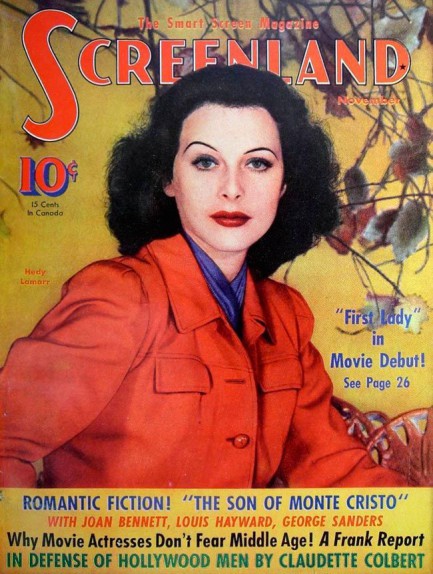
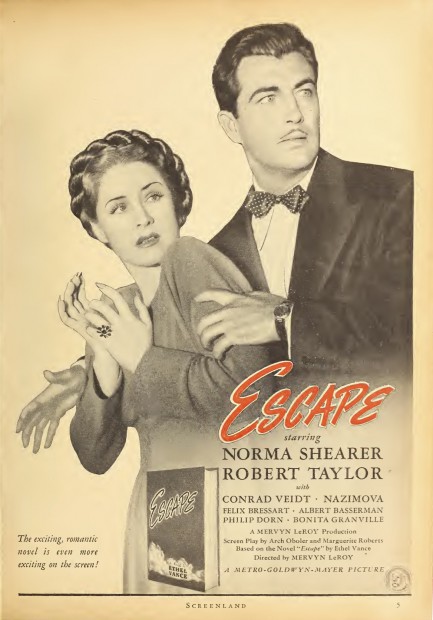
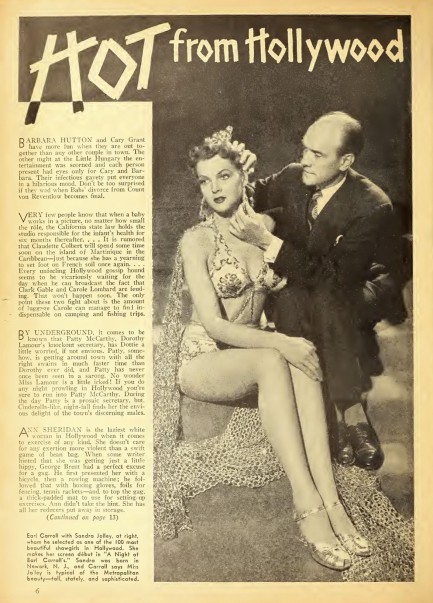
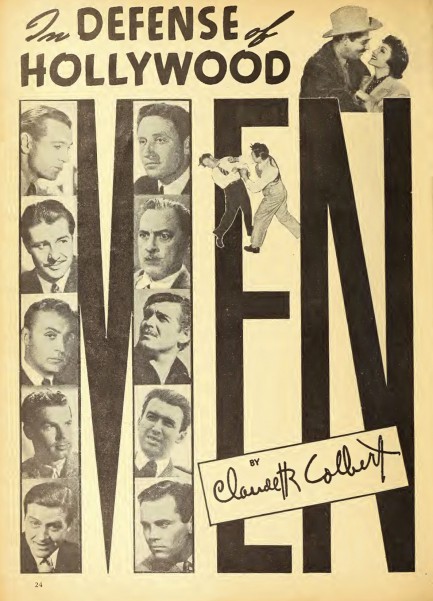
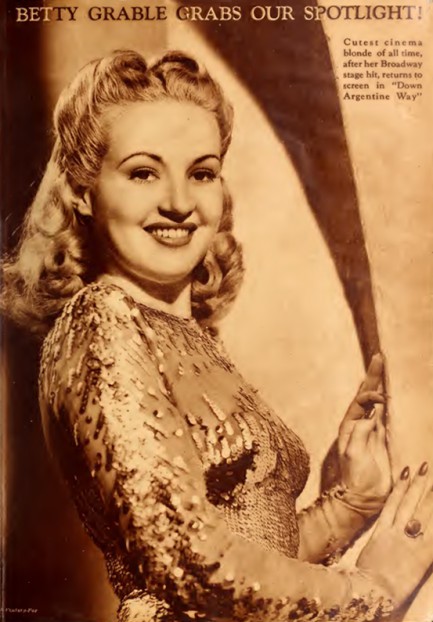
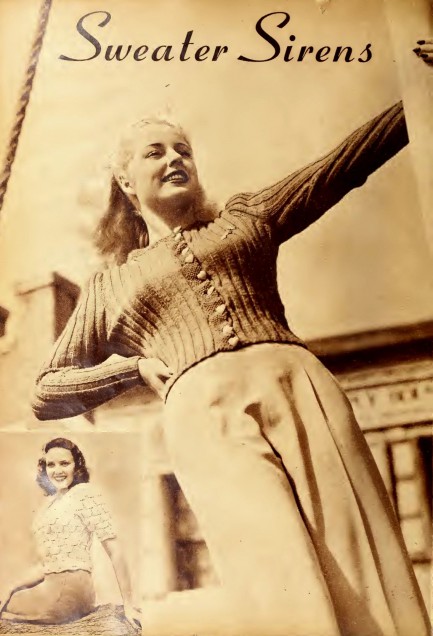
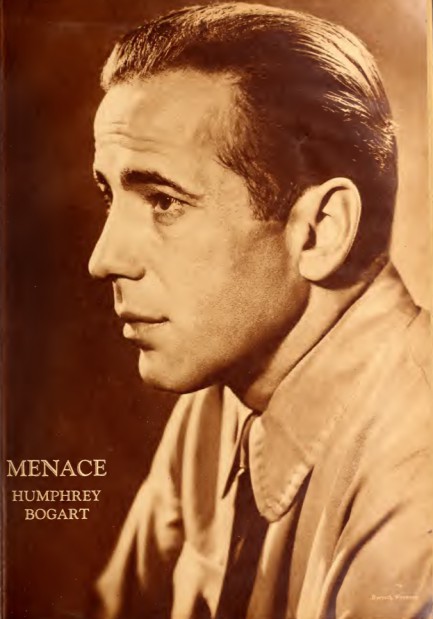


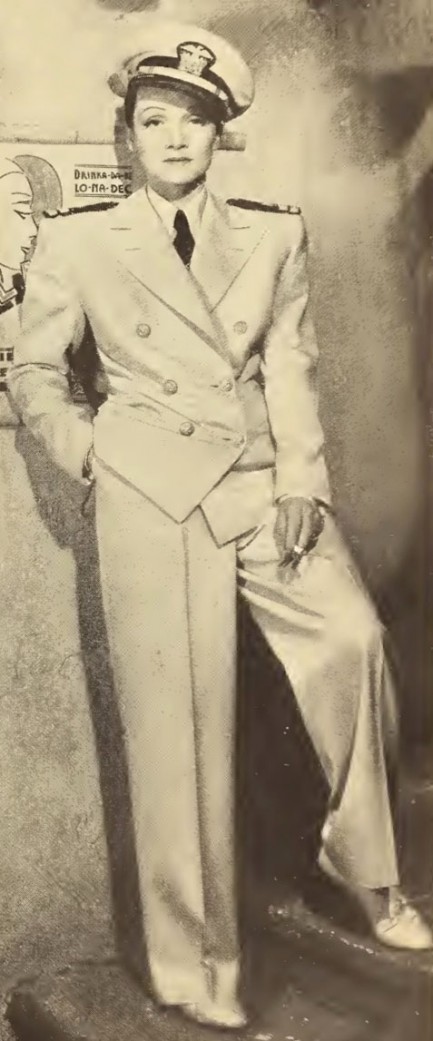
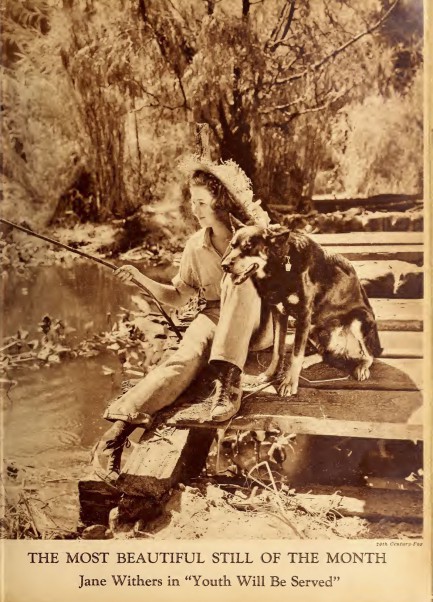
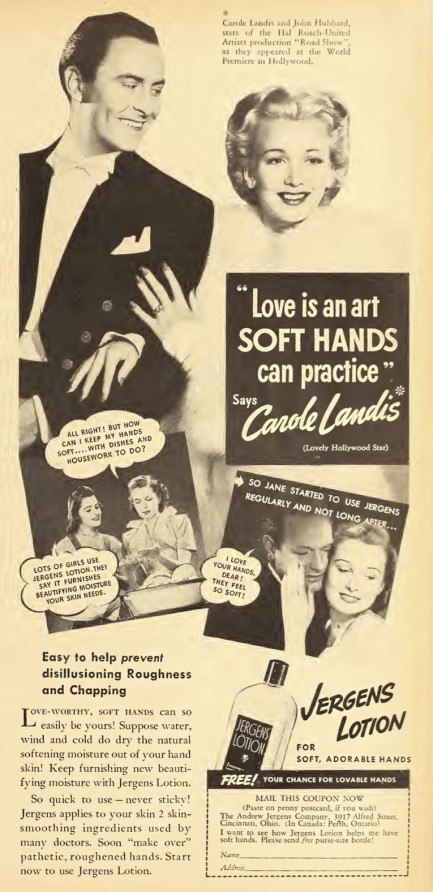
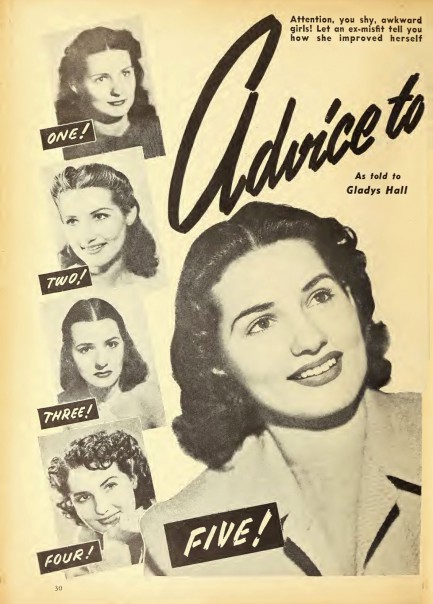
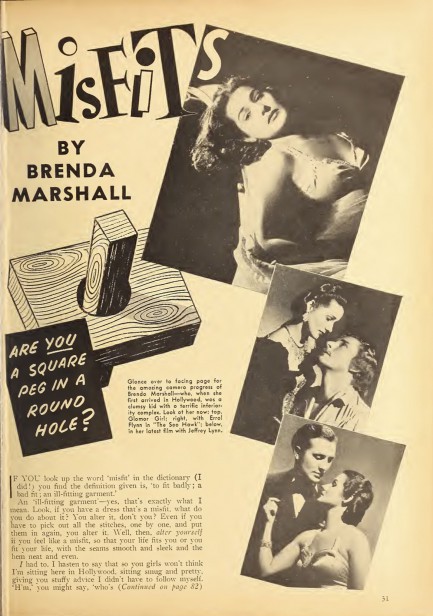
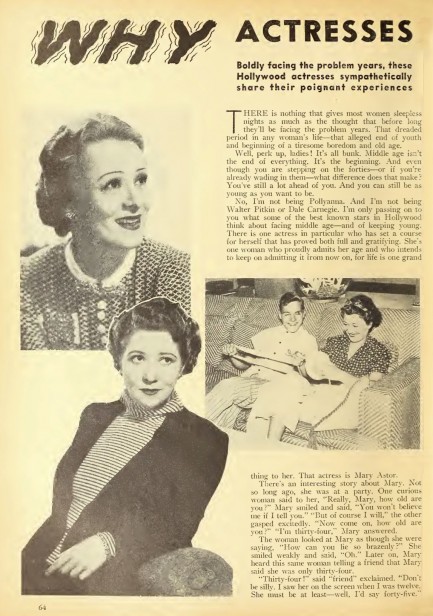
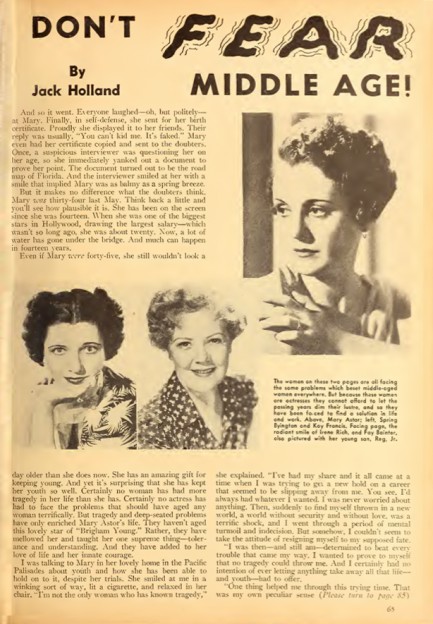
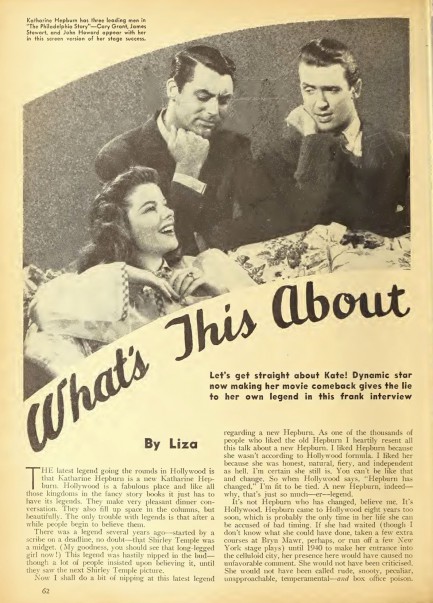
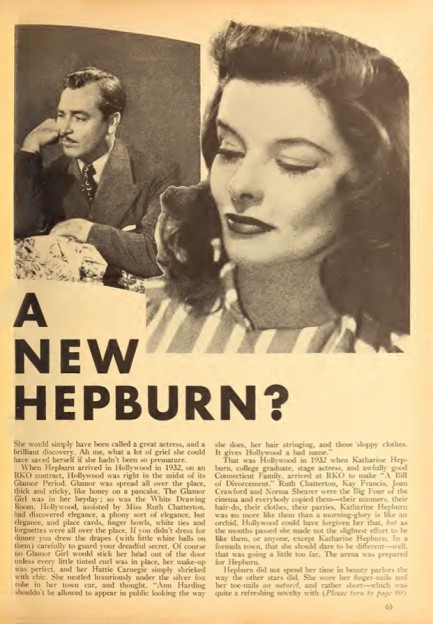
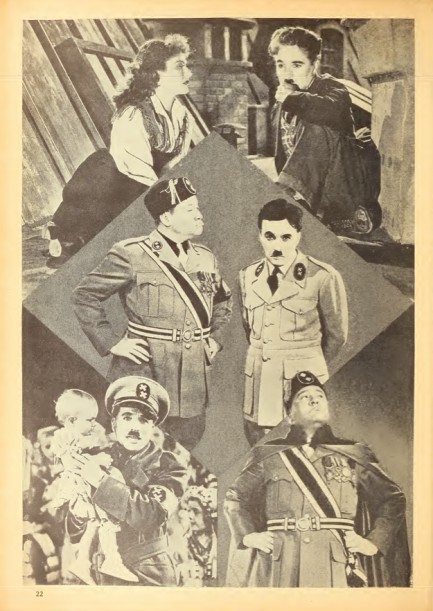
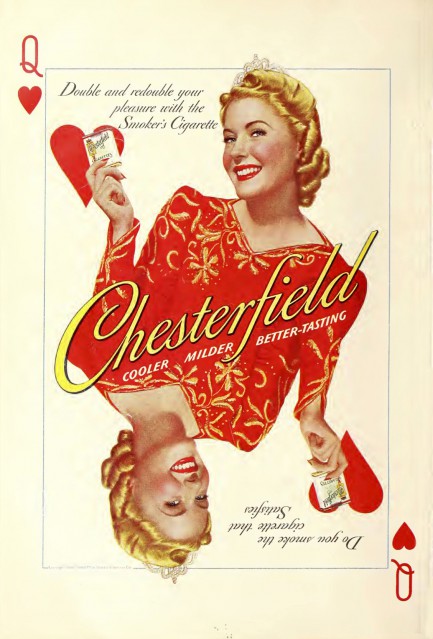




 entitled "An Interlude Before Evening," and involved being helped from her clothing by her maid Sadie before slipping nude into a bathtub. But the nudity was an illusion, the cleverest part of her act, achieved through a combination of lighting, positioning, flesh-colored underwear, and sheer athleticism as she slipped quickly from behind a towel and into the sudsy tub.
entitled "An Interlude Before Evening," and involved being helped from her clothing by her maid Sadie before slipping nude into a bathtub. But the nudity was an illusion, the cleverest part of her act, achieved through a combination of lighting, positioning, flesh-colored underwear, and sheer athleticism as she slipped quickly from behind a towel and into the sudsy tub. The trial was scheduled for early December in the Beverly Hills Courthouse. Giesler kept the jury—which wasn’t all strippers, but at least was mostly female—laughing with his continual antics. He introduced St. Cyr’s rhinestone encrusted bra and g-string as people’s exhibits A and B. He drew diagrams on a blackboard illustrating how different observers' vantage points toward the stage were blocked by St. Cyr's maid. He flustered police officials by making them discuss in detail such such terms as “bump,” “grind,” and “half-bump,” and followed that up by putting Herman Hover on the witness stand and having him demonstrate those moves. The sight of the portly Hover attempting burlesque sent ripples of laughter through the courtroom. Years later Giesler wrote: “I can honestly say I succeeded in having her case laughed into a not-guilty verdict.”
The trial was scheduled for early December in the Beverly Hills Courthouse. Giesler kept the jury—which wasn’t all strippers, but at least was mostly female—laughing with his continual antics. He introduced St. Cyr’s rhinestone encrusted bra and g-string as people’s exhibits A and B. He drew diagrams on a blackboard illustrating how different observers' vantage points toward the stage were blocked by St. Cyr's maid. He flustered police officials by making them discuss in detail such such terms as “bump,” “grind,” and “half-bump,” and followed that up by putting Herman Hover on the witness stand and having him demonstrate those moves. The sight of the portly Hover attempting burlesque sent ripples of laughter through the courtroom. Years later Giesler wrote: “I can honestly say I succeeded in having her case laughed into a not-guilty verdict.” 
 see the outline of her “private parts,” which he discerned in enough detail to determine “were shaven.” The inconsistencies were epic. Some said she caressed herself, others weren’t sure. Another described her towel as “about twenty, twenty-four inches.” In reality it was three times that size. It was as if St. Cyr's dance had dumbfounded the cops.
see the outline of her “private parts,” which he discerned in enough detail to determine “were shaven.” The inconsistencies were epic. Some said she caressed herself, others weren’t sure. Another described her towel as “about twenty, twenty-four inches.” In reality it was three times that size. It was as if St. Cyr's dance had dumbfounded the cops.
 freed her to inhabit different characters. Despite her assertions that she always wore at least a g-string and bra, she definitely performed topless on occasion, as shown by the above photo taken at Ciro’s during early 1951.
freed her to inhabit different characters. Despite her assertions that she always wore at least a g-string and bra, she definitely performed topless on occasion, as shown by the above photo taken at Ciro’s during early 1951.







 • The only eyewitness to Hitler’s suicide—his valet Heinz Linge—later recanted his testimony and admitted he never saw the Führer shoot himself.
• The only eyewitness to Hitler’s suicide—his valet Heinz Linge—later recanted his testimony and admitted he never saw the Führer shoot himself.





















































































